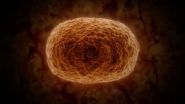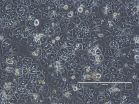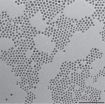(Press-News.org) A pioneering new study has shown that water found on Earth predates the formation of the Sun – raising hopes that life could exist on exoplanets, the planets orbiting other stars in our galaxy.
The ground-breaking research set out to discover the origin of the water that was deposited on the Earth as it formed.
It found that a significant fraction of water found on Earth, and across our solar system, predates the formation of the Sun. By showing that water is 'inherited' from the environment when a star is born, the international team of scientists believe other exoplanetary systems also had access to an abundance of water during their own formation.
As water is a key component for the development of life on Earth, the study has important implications for the potential for life elsewhere in the galaxy.
Professor Tim Harries, from the University of Exeter's Physics and Astronomy department, was part of the research team.
He said: "This is an important step forward in our quest to find out if life exists on other planets. We know that water is vital for the evolution of life on Earth, but it was possible that the Earth's water originated in the specific conditions of the early solar system, and that those circumstances might occur infrequently elsewhere.
"By identifying the ancient heritage of Earth's water, we can see that the way in which our solar system was formed will not be unique, and that exoplanets will form in environments with abundant water. Consequently, it raises the possibility that some exoplanets could house the right conditions, and water resources, for life to evolve."
Scientists have previously been able to understand the conditions present when stars are formed by looking at the composition of comets and asteroids, which show which gases, dust and, most importantly, ices were circling the star at its birth.
The team of international scientists were able to use 'heavy water' ices – those with an excess of water made with the element deuterium rather than hydrogen – to determine whether the water ices formed before, or during, the solar system's formation.
By using sophisticated modelling techniques, the team were able to show that the excess of heavy water was inherited from the pre-existing environment, suggesting that many exoplanets will contain water, the key liquid necessary for life.
Ilsedore Cleeves, a PhD student at the University of Michigan and lead author on the paper, explained: "There has been a long-standing question as to whether any of these ancient ices, including water, are incorporated into young planetary systems, or if all the preplanetary building blocks are reprocessed and/or locally synthesized near the star.
"These two scenarios have very different consequences for the composition of planets. In the latter case, the chemical make-up of the planets, including water, would depend upon what type of star a planet ends up next to. In contrast, the former case implies that all planetary systems would form from similar starting materials, including abundant interstellar water.
"The implication of these findings is that some of the solar system's water must have been inherited from the Sun's birth environment, and thus predate the Sun itself. If our solar system's formation was typical, this implies that water is a common ingredient during the formation of all planetary systems.
"To date, the Kepler satellite has detected nearly 1,000 confirmed extrasolar planets. The widespread availability of water during the planet-formation process puts a promising outlook on the prevalence of life throughout the galaxy."
INFORMATION:
The study, called The Ancient Heritage of Water Ice in the Solar System, is published in Science on Friday, September 26.
Heritage of Earth's water gives rise to hopes of life on other planets
2014-09-25
ELSE PRESS RELEASES FROM THIS DATE:
Harvesting hydrogen fuel from the Sun using Earth-abundant materials
2014-09-25
VIDEO:
Science published on Sept. 25, 2014 the latest developments in Michael Grätzel's laboratory at EPFL in the field of hydrogen production from water. By combining a pair of perovskite solar...
Click here for more information.
The race is on to optimize solar energy's performance. More efficient silicon photovoltaic panels, dye-sensitized solar cells, concentrated cells and thermodynamic solar plants all pursue the same goal: to produce a maximum amount of electrons ...
Innovative Stone Age tools were not African invention, say researchers
2014-09-25
A new discovery of thousands of Stone Age tools has provided a major insight into human innovation 325,000 years ago and how early technological developments spread across the world, according to research published in the journal Science.
Researchers from Royal Holloway, University of London, together with an international team from across the United States and Europe, have found evidence which challenges the belief that a type of technology known as Levallois – where the flakes and blades of stones were used to make useful products such as hunting weapons – was invented ...
New discovery could pave the way for spin-based computing
2014-09-25
PITTSBURGH—Electricity and magnetism rule our digital world. Semiconductors process electrical information, while magnetic materials enable long-term data storage. A University of Pittsburgh research team has discovered a way to fuse these two distinct properties in a single material, paving the way for new ultrahigh density storage and computing architectures.
While phones and laptops rely on electricity to process and temporarily store information, long-term data storage is still largely achieved via magnetism. Discs coated with magnetic material are locally oriented ...
Longstanding bottleneck in crystal structure prediction solved
2014-09-25
Two years after its release, the HIV-1 drug Ritonavir was pulled from the market. Scientists discovered that the drug had crystallized into a slightly different form—called a polymorph—that was less soluble and made it ineffective as a treatment.
The various patterns that atoms of a solid material can adopt, called crystal structures, can have a huge impact on its properties. Being able to accurately predict the most stable crystal structure for a material has been a longstanding challenge for scientists.
"The holy grail of this particular problem is to say, I've written ...
Genetic 'instruction set' for antibodies knocks down hepatitis C in mice
2014-09-25
A triple-punch of antibodies both prevented hepatitis C infection and wiped out the disease after it had established itself in laboratory mice, according to a study led by Princeton University researchers. Instead of delivering the three antibodies directly, the researchers administered a genetic "instruction set" that, once in a cell, developed into antibodies that target the portions of the virus that do not mutate.
Mice treated with the antibody genetic code resisted becoming infected with hepatitis C when they were exposed to the virus, the researchers reported in ...
On the road to artificial photosynthesis
2014-09-25
The excessive atmospheric carbon dioxide that is driving global climate change could be harnessed into a renewable energy technology that would be a win for both the environment and the economy. That is the lure of artificial photosynthesis in which the electrochemical reduction of carbon dioxide is used to produce clean, green and sustainable fuels. However, finding a catalyst for reducing carbon dioxide that is highly selective and efficient has proven to be a huge scientific challenge. Meeting this challenge in the future should be easier thanks to new research results ...
Study: Widespread vitamin D deficiency in thyroidectomy patients
2014-09-25
DETROIT – A new study from researchers at Henry Ford Hospital in Detroit finds widespread vitamin D deficiency among patients who undergo a thyroidectomy, potentially putting them at greater risk for developing dangerously low blood calcium levels after surgery.
Among the patients in the Henry Ford study, 40 percent had low vitamin D levels prior to surgery. Those more likely to be vitamin D deficient are individuals older than age 50, African Americans, Hispanics and patients undergoing surgery for hyperthyroidism.
"The issue of vitamin D deficiency in patients who ...
How to make stronger, 'greener' cement
2014-09-25
CAMBRIDGE, Mass--Concrete is the world's most-used construction material, and a leading contributor to global warming, producing as much as one-tenth of industry-generated greenhouse-gas emissions. Now a new study suggests a way in which those emissions could be reduced by more than half — and the result would be a stronger, more durable material.
The findings come from the most detailed molecular analysis yet of the complex structure of concrete, which is a mixture of sand, gravel, water, and cement. Cement is made by cooking calcium-rich material, usually limestone, ...
BUSM researchers find NAS treatment needs standardization
2014-09-25
(Boston) – When it comes to treating infants with neonatal abstinence syndrome (NAS), researchers from Boston University School of Medicine (BUSM) believe the care for these infants should be consistent and objective, with standardized assessment tools and evidence to back up pharmacologic and nonpharmacologic treatment choices.
The review paper, which is published online in Addiction Science & Clinical Practice, highlights the need for more research in this field to optimize care for both infants and their mothers.
NAS is a collection of signs and symptoms infants ...
Fecal microbiota transplantation recommended for treatment of C. difficile
2014-09-25
(Vienna, October 26, 2014) The transplantation of faecal microbiota from a healthy donor has been shown in recent clinical studies to be a safe and highly effective treatment for recurrent Clostridium difficile (C. difficile) infection and is now recommended in European treatment guidelines.1,2 Faecal microbiota transplantation (FMT) has emerged as a revolutionary, potentially life-saving treatment for this common, difficult-to-treat infection, and is showing promise in the management of other microbiota-related conditions.3,4
Presenting at the 22nd United European Gastroenterology ...




